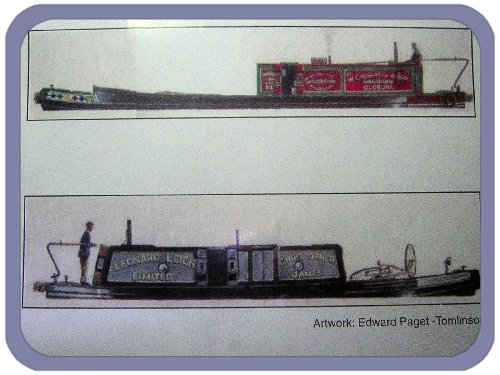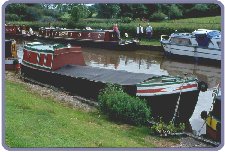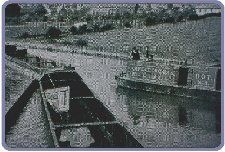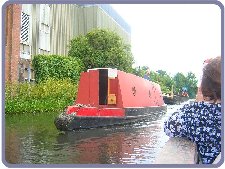

"History and Evolution of the BCN Tug ""Includes Tugs from other canals: Some of which are more like the BCN Tug in our minds eye than the real BCN Tug"Over the years in the minds of many a specific type of boat design called a BCN Tug seems to have evolved. In the minds eye of many it appears that this was a design of boat that evolved in the rarified waters of the BCN a mythical class of boat that many today aspire to imitate.
Many boat builders sell the idea of a tug to many a new boat buyer, some hang the label replica BCN Tug onto there product. "Introduction"The long lock free sections of the BCN system known as the Wolverhampton and Birmingham levels allowed for easy navigation especially with power haulage. This possibility was recognised in the early part of the 19th century when an entrepreneur suggested the use of tugs on the BCN, although there is no specific record when put into service. Of course steam tugs were used in some of the long tunnels on the Trent and Mersey and the Grand Junction Canals, also on the Coventry Canal for tugging boats in the coal fields. Postscript This section is very much work in progress and both Martin and Jeff would be pleased to receive any corrections/updates/further pictures, and especially engine details. Please e-mail to:http://martin@bcn-society.fsnet.uk
Further InformationAlso see Boundary Post Section as from BP 177 Summer 2007, Martin starts a series on the history of tugs. Part one:- Tale of Two Georges.Further Information: Colours for Tugs, compiled for Edition 181 of Boundary Post the 40th Anniversary Edition. | ||||||||||||||||
Whilst running the society shop at events such as the Crick Boat Show one of the regular questions from visitors stopping by the society stand was what colours were BCN tugs? My simplistic answer to this question would be green and red or grey and black.
The question deserves a more complete response! Firstly of course one of the attractions of our canal network is indeed the colourful boats. The fleets of the large carrying companies each with their own distinctive colours and lettering schemes together with the decoration of roses and castles or the individual schemes of the No.1. boatman who proundly displayed their own names on the cabin side, are the waterways of the past. The canals today still feature pleasure craft painted in a wide variety of colours, some tradtional and some not.

|
Tug Princess Anne:BW No... |

|
|
Tug Dot No 4/ Apollo: BW No... |

| 
|
Tugs Being Researched: Also looking at history of boats lost re any drawings/text etc.
|
Tug Coventry:BW No... |

| 
|
Navigation to other pages
Back to page 1 and Index to the Gallery
On to an article about the B Class of boats our butty comes from: page 12 of gallery
Back to page 10 of the Gallery: More Boat Projects